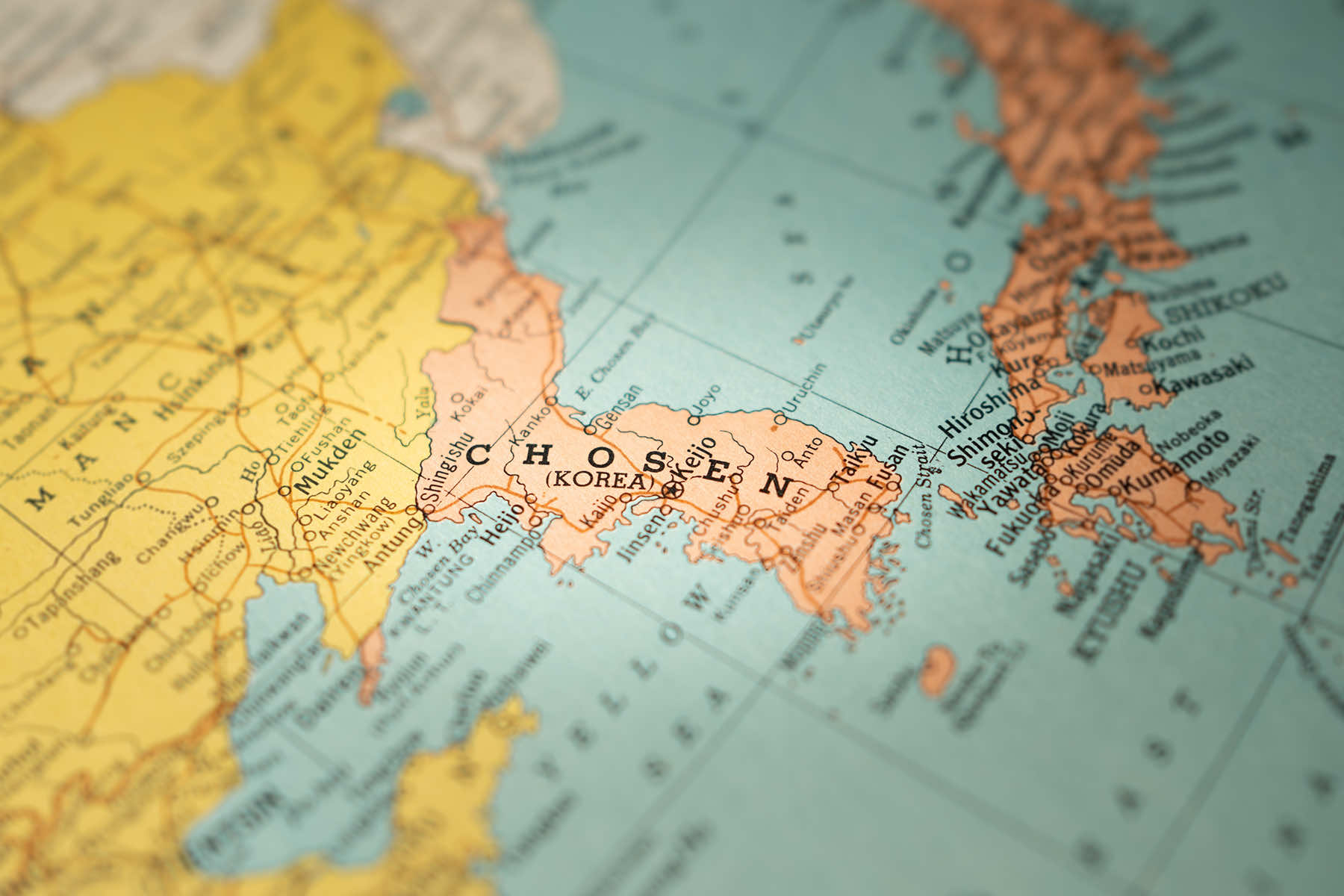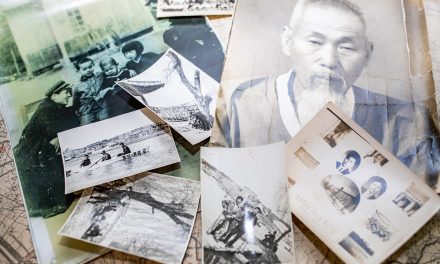
Once upon a time, before the Korean Peninsula was divided into the two starkly different nations of North Korea and South Korea, there was simply Korea. So entrenched is the modern division that a unified Korea seems like a fairytale, except that it was a reality until 1945.
The current division, and the aftermath of years of war, have cemented perceptions of North Korea. However, for many South Koreans and Korean Americans, their family histories can be traced back to regions that are now part of North Korea.
It is a challenge to explain what this accurately means. Having North Korean heritage from 1934 is not how Americans think of North Koreans in 2024. While technically accurate for geographical identification, it is drastically inappropriate for political identification.
To understand the situation requires delving into the rich historical context that predates the 1945 division of Korea, when a unified Korea existed with a cultural and national identity.
Before the traumatic events of the mid-20th century, Korea was one country with a celebrated past. The Joseon Dynasty, which ruled from 1392 to 1897, is one of the most notable periods in Korean history. The dynasty was characterized by significant developments in Confucian philosophy, literature, and science. The capital was established in Hanyang (modern-day Seoul), which became a cultural and political hub for the Korean people.
In 1897, the Joseon Dynasty transitioned into the Korean Empire, a brief period marked by attempts to modernize and resist foreign encroachment by Russia, China, and Japan. However, those efforts were ultimately unsuccessful. In 1910, Korea was annexed by Japan, leading to 35 years of harsh colonial rule.
During the Japanese occupation, Koreans across the peninsula shared a common struggle for independence. The March 1st Movement of 1919, where thousands of Koreans took to the streets demanding freedom, was an example of the unified national spirit. Despite brutal repression, the movement laid the groundwork for future resistance efforts.
The end of World War II in 1945 brought a glimmer of hope for Koreans as Japanese rule ended. However, the period also marked the beginning of a new and painful chapter. The Korean Peninsula was divided along the 38th parallel into two zones of occupation: the Soviet Union in the north and the United States in the south. The division, initially intended to be temporary, was a geopolitical compromise in the early stages of the Cold War.
The establishment of separate governments in 1948 further entrenched the division. The North, under Kim Il-sung, embraced Communism and established the Democratic People’s Republic of Korea (DPRK). The South, under Syngman Rhee, adopted a capitalist system and became the Republic of Korea (ROK). The ideological divide set the stage for the Korean War (1950-1953), a devastating conflict that sealed the separation of the two Koreas in perpetuity.
The Korean War began on June 25, 1950, when North Korean forces crossed the 38th parallel and invaded the South. The war quickly escalated into an international conflict, with the United States and other United Nations forces supporting South Korea, while China and the Soviet Union backed the North. The war resulted in immense destruction and loss of life, leaving an indelible mark on the Korean people.
An armistice agreement was signed on July 27, 1953, creating the Korean Demilitarized Zone (DMZ), a heavily fortified border that still exists today. However, no formal peace treaty was ever signed, meaning that the two Koreas remain technically at war. The DMZ stands as a stark reminder of the peninsula’s division, separating families and creating vastly different political and economic realities on either side.
The 1945 division of Korea and the Korean War caused significant migration and displacement. Many Koreans fled the North to escape the civil war, political persecution, and economic hardship, seeking refuge in the South or abroad. The mass movement of people created complex family dynamics and reshaped the demographic landscape of South Korea and the Korean diaspora.
For those who migrated, the transition was often fraught with difficulties. The journey to the South was perilous, and many families were separated, with members left behind in the North. The experiences of the refugees, known as “seongnanmin” or war refugees, are a somber part of South Korea’s history. Their stories of survival, adaptation, and loss continue to resonate today.
In the United States, Korean Americans with roots in the northern regions often carry the legacy of the traumatic displacement. Their family histories include tales of abandoning their home and families in one region to seek safety in another, surrounded by uncertainty and adversity. Despite the physical separation from their ancestral lands in the north, the cultural and emotional ties to their birthplace remain strong. The inconvenient reality is that North Korea is now an enemy land.
For many South Koreans and Korean Americans, understanding their family origins in what is now North Korea is an important part of their identity. But the historical context challenges the simplistic notion of a monolithic national identity, and the American understanding of what it means to be Korean.
To borrow an example from Europe, before 1945 the city of Lviv was part of Poland. After World War II it became part of Ukraine. Americans with ancestors born in Lviv in the 1930s think of themselves as Polish. They are not retroactively Ukrainian. Yet the opposite perception is often applied to descendants of Koreans born in the north. They are not retroactively North Korean.
The shared history of a unified Korea before 1945 encompassed a sense of continuity and common heritage among Koreans, regardless of their current nationality. The cultural practices, traditions, and values that originated in the northern regions before 1945 continue to influence the broader Korean culture – even if they have been abandoned or repressed in modern-day North Korea itself. Festivals, dialects, and culinary traditions are just a few examples of how the influences persist.
The division of Korea has not erased the collective memory of a once unified nation. Many South Koreans and Korean Americans honor their northern roots through stories passed down from one generation to the next, maintaining a connection to their ancestral lands. The shared heritage is often celebrated in cultural events and community gatherings, reinforcing a sense of unity and pride.
The historical context of Korea’s division also has significant political and social implications. In South Korea, there is a strong desire for reunification, driven by the belief in a shared Korean identity. Such aspirations are reflected in various political movements and policies aimed at fostering dialogue and cooperation with the North.
The South Korean government has periodically engaged in efforts to improve relations with North Korea, such as the Sunshine Policies established in the late 1990s. The initiatives, while often met with challenges, underscore the longstanding hope for a peaceful reunification, and the restoration of familial and cultural ties.
For Korean Americans, the geographical and historical context influences their perspectives on the Korean Peninsula’s future. Many advocate for peace and reconciliation, supporting efforts to bridge the divide between the two Koreas. Their unique position, as individuals with connections to both South Korea and their ancestral regions in the North, has allowed them to play a vital role in promoting understanding and dialogue.
As the Korean Peninsula continues to face an uncertain future, the shared history of a unified Korea serves as a powerful reminder of how historical connections can transcend political boundaries.
MI Staff (Korea)
Alan Mazzocco, Studio Pixs, Dixon Photo, Everett Collection (via Shutterstock), and Library of Congress
- Exploring Korea: Stories from Milwaukee to the DMZ and across a divided peninsula
- A pawn of history: How the Great Power struggle to control Korea set the stage for its civil war
- Names for Korea: The evolution of English words used for its identity from Gojoseon to Daehan Minguk
- SeonJoo So Oh: Living her dream of creating a "folded paper" bridge between Milwaukee and Korean culture
- A Cultural Bridge: Why Milwaukee needs to invest in a Museum that celebrates Korean art and history
- Korean diplomat joins Milwaukee's Korean American community in celebration of 79th Liberation Day
- John T. Chisholm: Standing guard along the volatile Korean DMZ at the end of the Cold War
- Most Dangerous Game: The golf course where U.S. soldiers play surrounded by North Korean snipers
- Triumph and Tragedy: How the 1988 Seoul Olympics became a battleground for Cold War politics
- Dan Odya: The challenges of serving at the Korean Demilitarized Zone during the Vietnam War
- The Korean Demilitarized Zone: A border between peace and war that also cuts across hearts and history
- The Korean DMZ Conflict: A forgotten "Second Chapter" of America's "Forgotten War"
- Dick Cavalco: A life shaped by service but also silence for 65 years about the Korean War
- Overshadowed by conflict: Why the Korean War still struggles for recognition and remembrance
- Wisconsin's Korean War Memorial stands as a timeless tribute to a generation of "forgotten" veterans
- Glenn Dohrmann: The extraordinary journey from an orphaned farm boy to a highly decorated hero
- The fight for Hill 266: Glenn Dohrmann recalls one of the Korean War's most fierce battles
- Frozen in time: Rare photos from a side of the Korean War that most families in Milwaukee never saw
- Jessica Boling: The emotional journey from an American adoption to reclaiming her Korean identity
- A deportation story: When South Korea was forced to confront its adoption industry's history of abuse
- South Korea faces severe population decline amid growing burdens on marriage and parenthood
- Emma Daisy Gertel: Why finding comfort with the "in-between space" as a Korean adoptee is a superpower
- The Soul of Seoul: A photographic look at the dynamic streets and urban layers of a megacity
- The Creation of Hangul: A linguistic masterpiece designed by King Sejong to increase Korean literacy
- Rick Wood: Veteran Milwaukee photojournalist reflects on his rare trip to reclusive North Korea
- Dynastic Rule: Personality cult of Kim Jong Un expands as North Koreans wear his pins to show total loyalty
- South Korea formalizes nuclear deterrent strategy with U.S. as North Korea aims to boost atomic arsenal
- Tea with Jin: A rare conversation with a North Korean defector living a happier life in Seoul
- Journalism and Statecraft: Why it is complicated for foreign press to interview a North Korean defector
- Inside North Korea’s Isolation: A decade of images show rare views of life around Pyongyang
- Karyn Althoff Roelke: How Honor Flights remind Korean War veterans that they are not forgotten
- Letters from North Korea: How Milwaukee County Historical Society preserves stories from war veterans
- A Cold War Secret: Graves discovered of Russian pilots who flew MiG jets for North Korea during Korean War
- Heechang Kang: How a Korean American pastor balances tradition and integration at church
- Faith and Heritage: A Pew Research Center's perspective on Korean American Christians in Milwaukee
- Landmark legal verdict by South Korea's top court opens the door to some rights for same-sex couples
- Kenny Yoo: How the adversities of dyslexia and the war in Afghanistan fueled his success as a photojournalist
- Walking between two worlds: The complex dynamics of code-switching among Korean Americans
- A look back at Kamala Harris in South Korea as U.S. looks ahead to more provocations by North Korea
- Jason S. Yi: Feeling at peace with the duality of being both an American and a Korean in Milwaukee
- The Zainichi experience: Second season of “Pachinko” examines the hardships of ethnic Koreans in Japan
- Shadows of History: South Korea's lingering struggle for justice over "Comfort Women"
- Christopher Michael Doll: An unexpected life in South Korea and its cross-cultural intersections
- Korea in 1895: How UW-Milwaukee's AGSL protects the historic treasures of Kim Jeong-ho and George C. Foulk
- "Ink. Brush. Paper." Exhibit: Korean Sumukhwa art highlights women’s empowerment in Milwaukee
- Christopher Wing: The cultural bonds between Milwaukee and Changwon built by brewing beer
- Halloween Crowd Crush: A solemn remembrance of the Itaewon tragedy after two years of mourning
- Forgotten Victims: How panic and paranoia led to a massacre of refugees at the No Gun Ri Bridge
- Kyoung Ae Cho: How embracing Korean heritage and uniting cultures started with her own name
- Complexities of Identity: When being from North Korea does not mean being North Korean
- A fragile peace: Tensions simmer at DMZ as North Korean soldiers cross into the South multiple times
- Byung-Il Choi: A lifelong dedication to medicine began with the kindness of U.S. soldiers to a child of war
- Restoring Harmony: South Korea's long search to reclaim its identity from Japanese occupation
- Sado gold mine gains UNESCO status after Tokyo pledges to exhibit WWII trauma of Korean laborers
- The Heartbeat of K-Pop: How Tina Melk's passion for Korean music inspired a utopia for others to share
- K-pop Revolution: The Korean cultural phenomenon that captivated a growing audience in Milwaukee
- Artifacts from BTS and LE SSERAFIM featured at Grammy Museum exhibit put K-pop fashion in the spotlight
- Hyunjoo Han: The unconventional path from a Korean village to Milwaukee’s multicultural landscape
- The Battle of Restraint: How nuclear weapons almost redefined warfare on the Korean peninsula
- Rejection of peace: Why North Korea's increasing hostility to the South was inevitable
- WonWoo Chung: Navigating life, faith, and identity between cultures in Milwaukee and Seoul
- Korean Landmarks: A visual tour of heritage sites from the Silla and Joseon Dynasties
- South Korea’s Digital Nomad Visa offers a global gateway for Milwaukee’s young professionals
- Forgotten Gando: Why the autonomous Korean territory within China remains a footnote in history
- A game of maps: How China prepared to steal Korean history to prevent reunification
- From Taiwan to Korea: When Mao Zedong shifted China’s priority amid Soviet and American pressures
- Hoyoon Min: Putting his future on hold in Milwaukee to serve in his homeland's military
- A long journey home: Robert P. Raess laid to rest in Wisconsin after being MIA in Korean War for 70 years
- Existential threats: A cost of living in Seoul comes with being in range of North Korea's artillery
- Jinseon Kim: A Seoulite's creative adventure recording the city’s legacy and allure through art
- A subway journey: Exploring Euljiro in illustrations and by foot on Line 2 with artist Jinseon Kim
- Seoul Searching: Revisiting the first film to explore the experiences of Korean adoptees and diaspora





























